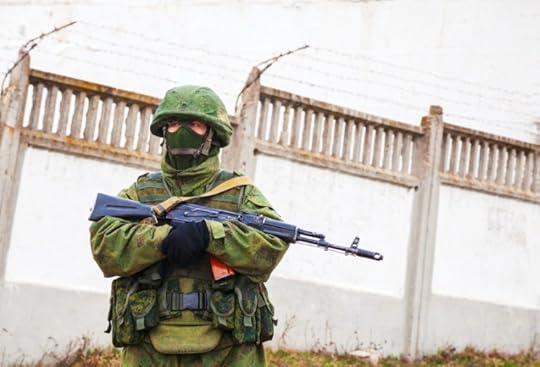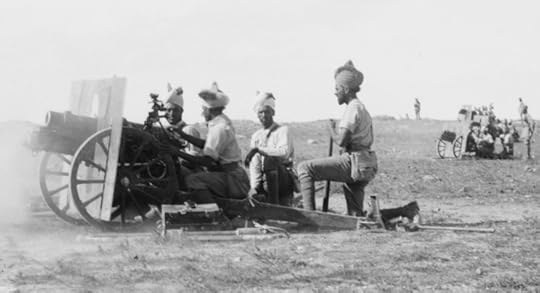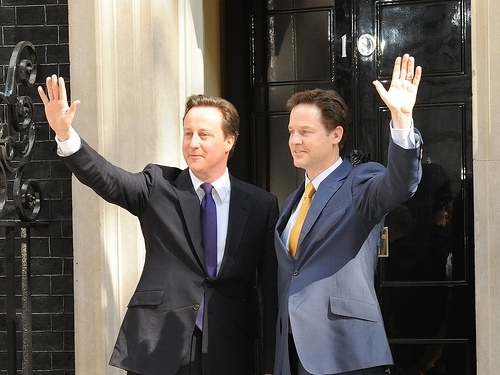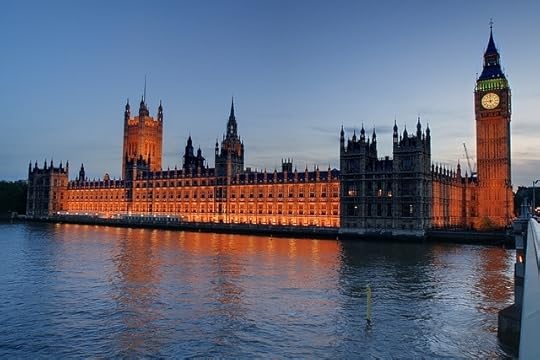Oxford University Press's Blog, page 724
December 15, 2014
Is international law just?
For almost a hundred years, international law has been on the receiving end of relentless criticism from the policy and academic worlds. That law, sometimes called the law of nations, consists of the web of rules developed by states around the world over many centuries through treaties and customary practices, some bilateral, some regional, and some global. Its rules regulate issues from the very technical (how our computers communicate internationally or the lengths of airport runways) to areas of common global concern (rules for ships on the seas or ozone pollution) to the most political for individual states (like when they can go to war or the minimum standards for human rights).
The first challenge to international law comes from those politicians, pundits, and political scientists who see it as fundamentally ineffective, a point they see as proved ever since the League of Nations failed to enforce the Versailles Treaty regime against the Axis in the 1930s. But those who really know how states relate to each other, whether diplomats or academics, have long found this criticism an unrealistic caricature. While some rules have little dissuasive power over some states, many if not most important rules, are generally followed, with serious consequences for violators, like ostracism, reciprocal responses, or even sanctions. The list of routinely respected rules is enormous, from those on global trade to the law of the sea to the treatment of diplomats to the technical areas mentioned above. Most international cooperation is grounded in some legal rules.
The second challenge to international law has come from domestic lawyers and some legal scholars who asserted that international law is not really “law” because it lacks the structure of domestic law, in particular an executive or police force that can enforce the rules. But this too is a canard. As the British legal scholar H.L.A. Hart pointed out more than a half-century ago, one does not need to have perfect enforcement for a rule to be “law,” as long as the parties treat the rules as law. With international law, states certainly interact in a way that shows they treat those rules as law. They expect them to be followed and reserve special opprobrium and responses for law violators. Certainly, powerful states can get away with some law violations more easily than weak states, but that has nothing to do with whether international law is law.
Third, international law has faced a challenge from some philosophers and global leaders that it is fundamentally immoral. They claim that its rules reflect self-interested bargains among governments, but lack moral content. It is intriguing that this moral criticism actually comes from two opposite directions. On the one hand, so-called cosmopolitan philosophers, who think people’s moral duties to one another should not turn on nationality or national borders (which they view as morally arbitrary), condemn many rules for sacrificing concern for the individual, wherever he or she may live, for the mere interests of states. On the other hand, leaders of many developing world nations claim that many of international law’s rules are immoral for not privileging states enough, in particular because they see the rules as part of a move by Northern states to undermine poor nations’ national sovereignty.
 Perevalne, Ukraine – March 4, 2014: Russian soldier guarding an Ukrainian military base near Simferopol city. The Russian military forces invaded Ukrainian Crimea peninsula on February 28, 2014. © AndreyKrav via iStock
Perevalne, Ukraine – March 4, 2014: Russian soldier guarding an Ukrainian military base near Simferopol city. The Russian military forces invaded Ukrainian Crimea peninsula on February 28, 2014. © AndreyKrav via iStockOne example shows the criticism. Consider the rule on secession, a rule that helps us evaluate, for instance, whether Crimea’s separation from Ukraine, and Russia’s engineering of that move, is illegal. International law has a “black-letter” rule that strictly limits the possibility for a group of people disaffected with their government to secede unilaterally from their state, only endorsing it if the government is severely denying them representation in the state. The point of the rule is to avoid the violence that comes from secessions – as we have seen from the break-up of Yugoslavia, the war between Sudan and the recently formed South Sudan, and the Ukraine-Russia conflict today. Cosmopolitan philosophers condemn the rule for not allowing individuals enough choice, by forcing people to remain tied to a state when they would prefer to have their own state, just for the sake of the stability of existing and arbitrary inter-state borders. Developing world leaders, often intolerant of minority groups in their state, criticize the rule for the opposite – for harming states by opening the door, however slightly, for some groups to secede and form their own states.
I think both of these criticisms miss the mark. In my view, many core rules of international law are indeed just because they do what all rules of international law must do – they promote peace, interstate or domestic, while respecting basic human rights. We need international rules to promote peace because the global arena is still characterized by a great deal of interstate and internal violence. At the same time, we cannot tolerate rules that trample on basic human rights, which are a sort of moral minimum for how we treat individuals.
This standard for a just system of international law is different from the more robust form of justice we might expect for a domestic society. The great theory of contemporary justice, that of John Rawls, demands both an equal right to basic liberty for all individuals within a state and significant redistribution of material wealth to eliminate the worst economic inequality. But we can’t really expect international law to do this right (particularly the second) now. Why? Because we cannot assume the domestic tranquility on which to build that more robust justice, and because the international arena does not have the same kind of strong institutions to force those sorts of rules on everyone (even though it can force some rules on recalcitrant states).
To return to my example about secessions, I think the rule we have strikes the right balance between peace and human rights. It promotes interstate and internal peace by disallowing merely unhappy groups to separate unilaterally; but it keeps the door open to that possibility if they are facing severe discrimination from the central government. So the Scots, Quebecers, or ethnic Russians in Ukraine do not have a right to secede, but Estonians did, and maybe Kurds still do. Other rules of international law will also meet this test, though I think some of them do risk undermining human rights.
Why should we care whether international rules are just? Because, as I stated earlier, those norms actually do guide much governmental action today. If a norm of international law is just, we have given global leaders and the public good reasons to respect it – as well as good reasons to be wary of changing it without careful reflection. And for those that are not, we can use an ethical appraisal to map out a course of action to improve the rules. That way, we can develop an international law that can promote global justice.
Headline image credit: Monument. CC0 via Pixabay.
The post Is international law just? appeared first on OUPblog.









 Related StoriesHuman Rights Awareness Month case mapKenneth Roth on human rightsTraveling patients, traveling disease: Ebola is just the tip of the iceberg
Related StoriesHuman Rights Awareness Month case mapKenneth Roth on human rightsTraveling patients, traveling disease: Ebola is just the tip of the iceberg
Physics Project Lab: How to build a cycloid tracker
Over the next few weeks, Paul Gluck, co-author of Physics Project Lab, will be describing how to conduct various Physics experiments. In this first post, Paul explains how to investigate motion on a cycloid, the path described by a point on the circumference of a vertical circle rolling on a horizontal plane.
If you are a student or an instructor, whether in a high school or at university, you may want to depart from the routine of lectures, tutorials, and short lab sessions. An extended experimental investigation of some physical phenomenon will provide an exciting channel for that wish. The payoff for the student is a taste of how physics research is done. This holds also for the instructor guiding a project if the guide’s time is completely taken up with teaching. For researchers it seems natural to initiate interested students into research early on in their studies.
You could find something interesting to study about any mundane effect. If students come up with a problem connected with their interests, be it a hobby, some sport, a musical instrument, or a toy, so much the better. The guide can then discuss the project’s feasibility, or suggest an alternative. Unlike in a regular physics lab where all the apparatus is already there, there is an added bonus if the student constructs all or parts of the apparatus needed to explore the physics: a self-planned and built apparatus is one that is well understood.
Here is an example of what can be done with simple instrumentation, requiring no more than some photogates, found in all labs, but needing plenty of building initiative and elbow grease. It has the ingredients of a good project: learning some advanced theory, devising methods of measurements, and planning and building the experimental apparatus. It also provides an opportunity to learn some history of physics.
 Cutting out the cycloid, image provided by Paul Gluck and used with permission.
Cutting out the cycloid, image provided by Paul Gluck and used with permission.The challenge is to investigate motion on a cycloid, the path described by a point on the circumference of a vertical circle rolling on a horizontal plane.
This path is relevant to two famous problems. The first is the one posed by Johann Bernoulli: along what path between two points at different heights is the travel time of a particle a minimum? The answer is the brachistochrone, part of a cycloid. Secondly, you can learn about the pendulum clock of Christian Huygens, in which the bob and its suspension were constrained to move along cycloid, so that the period of its swing was constant.
Here is what you have to construct: build a cycloidal track and for comparison purposes also a straight, variable-angle inclined track. To do this, proceed as follows. Mark a point on the circumference of a hoop, lid, or other circular object, whose radius you have measured. Roll it in a vertical plane and trace the locus of the point on a piece of cardboard placed behind the rolling object. Transfer the trace to a 2 cm-thick board and cut out very carefully with a jigsaw along the green-yellow border in the picture. Lay along the profile line a flexible plastic track with a groove, of the same width as the thickness of the board, obtainable from household or electrical supplies stores. Lay the plastic strip also along the inclined plane.
Your cycloid track is ready.
 The pendulum constrained to the cycloid, image provided by Paul Gluck and used with permission.
The pendulum constrained to the cycloid, image provided by Paul Gluck and used with permission.Measure the time taken for a small steel ball to roll along the groove from various release points on the brachistochrone to the bottom of the track. Compare with theory, which predicts that the time is independent of the release height, the tautochrone property. Compare also the times taken to descend the same height on the brachistochrone and on the straight track.
Design a pendulum whose bob is constrained to move along a cycloid, and whose suspension is confined by cycloids on either side of its swing from the equilibrium position. To do this, cut the green part in the above picture exactly into two halves, place them side by side to form a cusp, and suspend the pendulum from the apex of the cusp, as in the second picture. The pendulum string will then be confined along cycloids, and the swing period will be independent of the initial release position of the bob – the isochronous property. Measure its period for various amplitudes and show that it is a constant.
Have you tried this experiment at home? Tell us how it went to get the chance to win a free copy of the Physics Project Lab book. We’ll pick our favourite descriptions on 9th January. Good luck to all entries!
Featured image credit: Advanced Theoretical Physics blackboard, by Marvin PA. CC-BY-NC-2.0 via Flickr.
The post Physics Project Lab: How to build a cycloid tracker appeared first on OUPblog.









 Related StoriesTraveling patients, traveling disease: Ebola is just the tip of the icebergParenting during the holidaysPopulation ecologists scale up
Related StoriesTraveling patients, traveling disease: Ebola is just the tip of the icebergParenting during the holidaysPopulation ecologists scale up
December 14, 2014
Traveling patients, traveling disease: Ebola is just the tip of the iceberg
Many in the media and academia (myself included) have been discussing the Ebola crisis, and more specifically, the issues that arise as Ebola has traveled with infected patients and health care workers to the United States and infected other US citizens.
These discussions have been fascinating and frightening, but the terrifying truth is that Ebola is just the tip of the iceberg. Diseases have long traveled with patients, and as the phenomena of medical tourism and the more general globalization of health care grow, these problems are likely to grow as well.
Medical tourists are very good targets of opportunities for pathogens. Many are traveling with compromised or suppressed immune systems to destination countries for treatment with relatively high infection rates, including the risk of exposure to multi-drug–resistant pathogens.
Doctors typically distinguish commensals—the bugs we normally carry on our skin, mouth, digestive tracts, etc.—from pathogens, the harmful bacteria that cause disease through infection. But what is commensal for a person in India might be an exotic pathogen for a US population. Medical tourist patients are transporting their commensals and pathogens to the hospital environments of the destination countries to which they travel, and are exposed to the commensals and pathogens of hospitals and population at large in the destination country. These transmissions tax the health care system and the knowledge of physicians in the home country to whom the new microbe may be unknown, and diagnosis and treatment more difficult.
Air travel can involve each of the four classical modes of disease transmission: contact (e.g. body-to-body or touching an armrest), common vehicle (e.g. via food or water), vector (e.g. via insects or vermin), and airborne (although more recent planes are equipped with high efficiency particulate air (HEPA) filters reducing transmission risk, older planes are not).
We have seen several diseases travel in this way. The Severe Acute Respiratory Syndrome (SARS) outbreak of 2003 involved a three-hour flight from Hong Kong to Beijing carrying one SARS-infected passenger leading to sixteen passengers being subsequently confirmed as cases of SARS, with eight of those passengers sitting in the three rows in front of the passenger.
In January 2008, a new type of enzyme was detected in bacteria found in a fifty-nine-year-old man with a urinary tract infection being treated in Sweden. The man, Swedish but of Indian origin, had in the previous month undergone surgeries at two hospitals in India. The enzyme, labeled “New Delhi metallo-beta-lactamase-1 (NDM-1)” was able to disarm a lot of antibiotics, including one that was the last line of defenses against common respiratory and urinary tract infection.
 © anyaberkut via iStock.
© anyaberkut via iStock. In 2009, a study found that twenty-nine UK patients had tested positive for the bacteria-carrying NDM-1 and that seventeen of the twenty-nine (60%) had traveled to India or Pakistan in the year before. A majority of those seventeen received medical treatment while abroad in those countries, some for accidents or illness while traveling and others for medical tourism, either for kidney and bone marrow transplants or for cosmetic surgery.
High-income countries face significant problems with these infections. A 2002 study estimated that 1.7 million patients (ninety-nine thousand of whom died as a result) developed health care-acquired infections in the United States that year. In Europe these infections have been estimated to cause thirty-seven thousand deaths a year and add US $9.4 billion in direct costs
What can be done? Although in theory airline or national travel rules can prevent infected patients from boarding planes, detecting these infections in passengers is very difficult for the airline or immigration officials, and concerns about privacy of patients may chill some interventions. A 2007 case of a man who flew from the United States to Europe with extensively resistant tuberculosis and who ultimately circumvented authorities who tried to stop him on return by flying to Montreal, Canada and renting a car, shows some of the limits on these restrictions.
Part of the solution is technological. The HEPA filters discussed above on newer model planes reduce the risk substantially, and we can hope for more breakthroughs.
Part of the solution is better regulating the use of antibiotics: overuse of antibiotics when not effective or necessary, underuse of antibiotics when they are needed, failure to complete a full course of antibiotics, counterfeit drugs, and excessive antibiotic use in food animals. This is not a magic bullet, however, and we see problems even in countries with prescription systems such as the United States.
We also need much better transparency and reaction time. Some countries reacted quickly to the report of the NDM-1 cases discussed above in issuing travel warnings and informing home country physicians, while others did not.
Finally, as became evident with Ebola, we need better protocols in place to screen returning medical tourism patients and to engage in infection control when needed.
Headline image credit: Ebola virus virion by CDC microbiologist Cynthia Goldsmith. Public domain via Wikimedia Commons.
The post Traveling patients, traveling disease: Ebola is just the tip of the iceberg appeared first on OUPblog.









 Related StoriesEbola: the epidemic’s next phasePopulation ecologists scale upIt’s not just about treating the cancer
Related StoriesEbola: the epidemic’s next phasePopulation ecologists scale upIt’s not just about treating the cancer
1914: The Battle for Basra
The centenary of the capture of Basra offers an opportunity to reflect on the nature and impact of the first Western military intervention in Iraq, nine decades before the city once again became the focal point of British activity in the country between 2003 and 2009. The small-scale operation envisaged by British political and military planners in October 1914 morphed into one of the most protracted military campaigns outside of the European theatre of the Great War. It combined gross initial mismanagement and eventual humiliation with landmark military successes such as the occupation of Baghdad in March 1917 and the first flawed attempt at imposing an external state-building agenda in Iraq. More than 40,000 British and Indian soldiers lost their lives and were commemorated on a memorial displayed prominently near Basra until 1997, when it was moved by order of Saddam Hussein to an isolated desert outpost.
On the evening of 21 November 1914, two gunboats advanced toward Basra with detachments of Indian forces belonging to the 104th Wellesley Rifles and the 117th Mahrattas of 16th Brigade of the Indian Army’s 6th Division. Sent ashore to restore order following the outbreak of looting in the town, the capture of Basra was among the first major British successes in the Great War then entering its fourth month. Two days later, the British flag was raised over the town and a headline in the Daily Mail proclaimed proudly ‘Another Red Patch on the Map.’ Much to the delight of British officers with the Indian force, the English Club was found undisturbed by the looting that took place after the Ottoman withdrawal, and well-stocked with lager beer.
Soon after the outbreak of the First World War in August 1914, reports had begun to reach British officials in London that the Ottoman Army had started to mobilise in Baghdad and was seizing British property in the city. In fact, the Ottoman Army had started a general mobilisation on 3 August, and three days later the authorities in Baghdad proclaimed martial law, even though the Ottomans did not formally declare war until late-October. By mid-September, Ottoman troops in Basra were preparing defensive positions along the Shatt al-Arab waterway, and limited (though unsuccessful) attempts had been made to enlist the major tribal groupings around Baghdad.
The news from Mesopotamia alarmed Sir Edmund Barrow, the Military Secretary at the India Office in London. His office, along with the Government of India, was responsible for the British-protected sheikhdoms of Kuwait, Bahrain, and the Trucial States (today the United Arab Emirates) in the Persian Gulf. Barrow feared the Ottomans’ actions might damage British prestige in the region and sway the loyalty of local tribal sheikhs, upon whose collaboration rested British commercial, political and strategic supremacy in the Gulf. Accordingly, he suggested sending a military force to the Shatt al-Arab at the northern head of the Gulf to repair local prestige and reassure any wavering local allies of British support. Furthermore, it would demonstrate British military might to regional observers, protect the Anglo-Persian Oil Company’s installations and pipeline at Abadan on the eastern (Persian) shore of the Gulf, and cover the landing of any reinforcements which might subsequently be required. At this stage, and in striking contrast to the importance that Mesopotamia’s oil potential assumed by 1918, British interests were primarily motivated by issues of prestige, rather than the strategic control of oil-producing areas.
 Indian Army gunners with 3.7 inch Mountain Howitzers. Public domain via Wikimedia Commons.
Indian Army gunners with 3.7 inch Mountain Howitzers. Public domain via Wikimedia Commons. The 16th Indian Brigade sailed from Bombay on 16 October 1914 in a convoy headed to Egypt and then on to France to reinforce Indian troops being sent to the Western Front. However, the Brigade was ordered to detach itself from the convoy and make its way to Bahrain, where it arrived on 23 October. Once there, it encountered unexpectedly stiff local unease at its presence, which forced the 5000 men and 1200 animals to remain on their cramped troopships in hot and oppressive conditions. With the declaration of war with the Ottoman Empire imminent, 16th Brigade sailed northward to the Shatt al-Arab at the head of the Persian Gulf and prepared for an attack on the Faw Peninsula south-east of Basra. At 6am on the morning of 6 November 1914, HMS Odin fired the first shots of the campaign as it bombarded the local Ottoman fort and landed 600 men on the peninsula. The Brigade proceeded to Abadan (in Persian territory) on 9 November, where it disembarked with some difficulty, and, two days later, beat off an Ottoman counter-attack to confirm their foothold.
The British declaration of war with the Ottoman Empire on 5 November 1914 led the British military authorities in India to rapidly dispatch a second infantry brigade (the 18th) to reinforce 16th Brigade. It arrived at Abadan on 14 November. Two days later, the Cabinet in London authorised the capture of Basra on the condition that the Arab political situation and general military conditions were favourable. A sharp engagement took place at Salih on 17 November in a downpour that turned the desert ‘into a veritable sea of mud’ and claimed nearly 500 British and Indian and over 1000 Ottoman casualties. This unexpectedly costly success paved the way for the final advance to Basra, completing the initial objective of what became known as Indian Expeditionary Force D. Even at this formative stage, the seeds of local resistance were being sown as a fatwa issued by the Ottoman Sultan calling for jihad against the British occupiers was read out in every Sunni mosque in Mesopotamia. The Shiite clergy of Najaf were among the first to declare their support in response to an urgent appeal from their counterparts in Basra.
The successful capture of Basra did not lead to a halt in military operations in Mesopotamia. Instead, and largely for reasons of prestige, the campaign expanded rapidly throughout 1915. This left Indian Expeditionary Force D dangerously over-exposed across mutually unsupportable positions and dependent on a supply and transport network that creaked at the seams before breaking down completely early in 1916. Subsequent military operations in Mesopotamia until November 1918 spawned a potent array of political and economic grievances that culminated in the mass uprising against British rule known as the al-Thawra al-‘Iraqiya al-Kubra (the Great Iraqi Revolution) in 1920. A century later, with one-third of Iraq under the control of an Islamic State bent on redrawing the map of the modern Middle East that emerged from the war, the legacy of decisions made during and immediately after the First World War continue to cast their long shadow over the region.
This article originally appeared on the Hurst Publishers blog.
The post 1914: The Battle for Basra appeared first on OUPblog.









 Related StoriesLest we forgetMoses the liberator: Exodus politics from Eusebius to Martin Luther King Jr.Virginia Woolf’s Orlando and the country house
Related StoriesLest we forgetMoses the liberator: Exodus politics from Eusebius to Martin Luther King Jr.Virginia Woolf’s Orlando and the country house
The English question: a Burkean response?
The prospective award of substantial new powers to the Scottish Parliament, which is currently being debated by the Smith Commission, has engendered a growing unease about the constitutional position of many different parts of the UK. This issue is causing concern in Wales, still reeling at the rushed and unfortunate decision to rule the Barnett formula out of the current constitutional debate, and Northern Ireland, where there is a gathering sense of uncertainty about questions ranging from income tax to the prospect of a hung Parliament, following the 2015 election, and the political leverage this might offer to the Democratic Unionist Party.
And there are concerns, too, for those English regions that feel squeezed between an ever more powerful London and a more autonomous Scotland primed to use the new levers it may acquire to divert investment in its direction.
The aftermath of the Scottish referendum has also unleashed a much wider debate about how England as a whole fares in the post-devolved Union, and specifically about some of the anomalies and asymmetries which Labour’s devolution reforms have accentuated — not least the question of how legislation that affects England only or mainly is handled in the Commons. The Conservatives have sought to claim this issue for itself, identifying with one particular answer to the West Lothian conundrum — English-votes-for-English-laws (EVEL).
Experts and campaigners have been quick to proclaim the pros and cons of this particular idea (which in fact can signal a spectrum of different changes, ranging from denying non-English MPs the right to vote on final readings of Bills to finding different ways of giving English representatives a greater role during the passage of legislation), and the main parties have for the most part responded to it in a dismally partisan fashion.
But these anxieties and worries need to be framed in relation to each other, so that this becomes a moment for wider reflection and democratic debate about some of the principles, conventions, and structures of governance within the UK. With the notable exception of the debate which the Lords staged a few weeks ago, these questions have been given too little consideration. Foundational issues such as how all the different pieces of the devolution puzzle might be knitted together, and what kind of democratic process is now required to ensure such an overview, are worryingly absent from much political discourse.
 PM and Deputy PM outside Number 10 by The Prime Minister’s Office. CC BY-NC-ND 2.0 via Flickr.
PM and Deputy PM outside Number 10 by The Prime Minister’s Office. CC BY-NC-ND 2.0 via Flickr. There is a growing imperative for the parties to consider what kind of territorial constitution they now wish the UK to become, and to indicate the direction of travel in which they wish constitutional reform to move. Instead Labour says little, a stance that reflects its steady transformation into the conservative party in this area — grimly determined to defend a constitutional settlement which it introduced during the first Blair government.
The Conservatives, on the other hand, have been more sure-footed politically on this issue. Yet they would do well to ponder the curious evolution of their own unionism — for so long an essential ingredient within the party’s DNA. As it has become ever more Anglicized in terms of its parliamentary representation and grassroots strength, and as it has lost its foothold in Scotland and fallen back in Wales, the Unionist party has increasingly turned into the party of Southern and Eastern England. (Indeed one of the most striking features of UKIP’s current ascendancy is its current success in reaching across the chasm of electoral geography which neither of the two main parties at Westminster seems able to bridge). And while it makes considerable political sense for the Conservatives to try to harness a growing set of English grievances and sensitivities, this needs to be squared with the party’s attempt to pose as the champion of the Unionist tradition when dealing with Scottish separatism, on the one hand, and the strongly devolutionist drift of its policy thinking on Scotland and England, on the other.
These discordant notes need somehow to be brought into a new melodious arrangement. This, after all, is the Conservative party, which has always developed its thinking around the values of constitutional preservation, a respect for established institutions and governing structures, and a Burkean understanding of change as best undertaken in organic and evolutionary ways, rather than at the behest of abstract principle or rationalistic design. And accordingly, when the party has on occasions argued for big reforms — for instance the Corn Laws or the great Reform Act of 1867 — it has done so on the grounds that these changes would ensure the integrity and continuity of the system as a whole.
 Houses of Parliament at twilight by Davide Simonetti CC BY-NC 2.0 via Flickr.
Houses of Parliament at twilight by Davide Simonetti CC BY-NC 2.0 via Flickr. This ethic has formed the heart of a distinctively Conservative statecraft, an approach to governance reflecting the embedded values of prudent territorial management, sensitivity to the dispositions of the English shires, and a willingness to craft and oversee distinctive institutional settlements for the different territorial parts of the UK. Tory statecraft has for the most part sought to take the political sting out of differences over nationality and territory within the UK, rather than to accentuate and make political capital out of them.
But one of the most striking features of the current situation is the relative paucity of voices considering constitutional change in this kind of way. Instead, the party’s leadership seems to have been spooked by the rise of UKIP into jettisoning its remaining Burkean instincts. Forcing a vote on a proposal for the reform of the House of Commons, which it knows will create a major political division may well make some electoral sense — though whether English anomie will be impressed or satiated by EVEL remains to be seen — but also carries the risk of opening up territorial tensions without the prospect of a viable solution to them within a unionist framework.
Above all, the Conservative party needs to connect the case for the greater recognition and protection of English interests to its commitment to putting the Union on a more durable and fairer footing. Such a position is fundamentally different to the kinds of populist and resentful nationalism which UKIP, and some of its fellow travellers, currently favour. Interestingly, there are signs in recent polling that the English have responded to the Referendum, and the prospect of Scotland leaving the UK, by becoming somewhat less resentful and aggrieved about England’s position in the Union. Such a stance is not compatible, however, with the fantasy of symmetrical devolution all round which underlies the suggestions of those Conservative Cromwellians, who wish to introduce the kind of territorial reform to the House of Commons that would almost certainly amount to the creation of an English parliament and the potential dissolution of the Union.
The Conservatives would do well therefore to rediscover their own tradition of statecraft. This means re-engaging with the diversity of England and the English, and considering the changes that need to be made to the governance and economy of different parts of England — to its counties and rural towns, as well as city-regions and metropolitan authorities — as well as to the Westminster parliament. The boldness and ambition of the offer that George Osborne recently made to Manchester suggest an appreciation of the growing desire for devolution among the English. The challenge now is to shape a more extensive conversation that encompasses all the different pieces of the devolution jigsaw.
Headline image credit: Flag by treehouse1977. CC BY-SA 2.0 via Flickr
The post The English question: a Burkean response? appeared first on OUPblog.









 Related StoriesMoses the liberator: Exodus politics from Eusebius to Martin Luther King Jr.Why are structural reforms so difficult?Population ecologists scale up
Related StoriesMoses the liberator: Exodus politics from Eusebius to Martin Luther King Jr.Why are structural reforms so difficult?Population ecologists scale up
A few things to know about monkeys
December 14th is Monkey Day. The origin behind Monkey Day varies depending on who you ask, but regardless, it is internationally celebrated today, especially to raise awareness for primates and everything primate-related. So in honor of Monkey Day, here are some facts you may or may not know about these creatures.

Headline image credit: Berber monkeys. Public domain via Pixabay.
The post A few things to know about monkeys appeared first on OUPblog.









 Related StoriesHoliday traditions from around the worldPopulation ecologists scale upThe lake ecosystems of the Antarctic
Related StoriesHoliday traditions from around the worldPopulation ecologists scale upThe lake ecosystems of the Antarctic
Selfies and model bottoms: monkeying around with intellectual property rights
When “The Case of the Black Macaque” scooped media headlines this summer, copyright was suddenly big news. Here was photographer David Slater fighting Wikipedia over the right to disseminate online a portrait photo of a monkey which had, contrary to all expectations and the law of averages, managed within just a few jabs of a curious finger, to take a plausible, indeed publishable “selfie”. Did Slater have the right to control the image since it was his camera on which it was recorded, or was it free for the world to use on the basis that he was not its author, the true creator being the crested black macaque who, for all her charm and dexterity, was neither a real nor legal person and therefore disentitled to any legal rights?
Disputes like this make great headlines, but cause even greater headaches for the intellectual property (“IP”) community. Most have little legal substance to them and are interesting only because of their facts, but that’s what drives journalists’ involvement and readers’ interest, making it easier for the media to attract paying advertisers. By the time they pass through the media machine these tales are frequently mangled to the point at which IP lawyers can scarcely recognise them. In one recent case involving a well-known chocolate brand, a company was said to have patented its copyright in England in order to sue a business in Switzerland for trade mark infringement. To the layman this may sound fine, but it’s about as sensible to the expert as telling the doctor that you’ve got a tummy ache in your little finger because your cat ate the goldfish last night. We IP-ers try to explain the real story, but monkeys and selfies are far more fun than the intricacies of copyright law and, by the time we’ve tried to put the record straight, the next exciting story has already broken.
“By the time they pass through the media machine, these tales are frequently mangled to the point at which IP lawyers can scarcely recognise them”
The next selfie episode to hit the headlines, far from featuring a portrait, was quite the opposite end of the anatomical spectrum. Model Kim Kardashian objected that Jen Selter’s selfies constituted copyright infringements of photos which had been taken of Kim Kardashian’s bottom (occasionally colloquially described as her “trademark” bottom, but not yet registered in conventional legal fashion). Here the only questions IP lawyers address are (i) are the pictures of Kim Kardashian’s backside copyright-protected works and (ii) does the taking by Jen Selter of selfies of her own posterior constitute an infringement? For press and public, however, the issue morphs into the much more entertaining, if legally irrelevant, one of whether a person has copyright in their own bottom.
![By Self-portrait by the depicted Macaca nigra female. See article. (Wtop.com) [Public domain], via Wikimedia Commons](https://i.gr-assets.com/images/S/compressed.photo.goodreads.com/hostedimages/1418571050i/12827722._SY540_.jpg) Self-portrait by the depicted Macaca nigra female. Public domain via Wikimedia Commons
Self-portrait by the depicted Macaca nigra female. Public domain via Wikimedia Commons There are many IP rights apart from copyright and they all have their macaque moments. Trade mark law is full of episodes of evil corporations stealing words from the English language and stopping anyone else using them. Patent law (in which the legal protection of body parts very much smaller than bottoms, such as sequences of DNA, does have some relevance) is garnished with tales of greed and intrigue as people seek to steal one another’s ideas and avariciously monopolise them. Confidentiality and the right to publicity have their own rip-roaring encounters in court as amorous footballers who are “playing away” seek to hush up their extramarital (that’s one word, not two) exploits. Meanwhile, the women with whom they shared moments of illicit intimacy seek to cash in on their news value by selling them to the highest bidder. For IP lawyers the legal issues are serious and, when cases come to court, they achieve precedential status that governs how future episodes of the same nature might be handled. For press and public, the issues are different: who is the footballer, who is the woman — and are there any pictures (ideally selfies)?
Seriously, the rate at which not just eye-catching tales like those related above but also far less glamorous tales result in litigation, or even legislation, makes it hard-to-impossible for practitioners, academics, administrators and businessmen to keep abreast of the law, let alone understand its deeper significance for those affected by it: businesses, governments, consumers, indeed everyone. Publishers like OUP are increasingly raising the tempo of their own responses to the IP information challenge, utilising both formal and informal media, in print and online. Since legal publishing is largely reactive, we can narrow the gap between the time an exciting new event or legal decision hits the popular media and the point at which we can strip it down to its bare legal essentials. But it will take more than a little monkeying around before we can close that gap completely.
Featured image credit: Camera selfie, by Paul Rysz. CC-BY-2.0 via Flickr.
The post Selfies and model bottoms: monkeying around with intellectual property rights appeared first on OUPblog.









 Related StoriesThe past, present, and future of overlapping intellectual property rightsChristmas crime filmsTop four high profile cases in Intellectual Property law
Related StoriesThe past, present, and future of overlapping intellectual property rightsChristmas crime filmsTop four high profile cases in Intellectual Property law
Parenting during the holidays
The holiday season can be an insanely stressful time. Looking for presents, wrapping them, cooking, getting the house ready for visitors, cleaning before and after. Nothing like a normal Saturday night on the couch in front of the TV or with a couple of close friends. The holidays demand perfection. You see it all around you, friends are talking about how stressed out they are, how much they still have to do in just a couple of days. Hyper-decorated stores are talking in their own way. As you approach the 25th of December you still haven’t bought half the gifts you need to rack up for family members, the house looks like a bomb crater and you occasionally wish yourself back in the office with piles of work on your desk waiting to be completed. There are even times when you would exchange a chilly Monday morning and an 8 o’clock meeting for this nerve-racking time that’s supposed to be happy, fun and merry.
What many rattled folks forget in the midst of buying last-minute bequests for loved ones or checking on the unhappy-looking beast in the oven minutes before guests arrive, wishing themselves far away, is that as many as half of the population face a holiday season without their dearest family members. There are people who have lost their loved ones in gruesome ways. I can’t even begin to imagine how they must feel, as they approach every new upcoming holiday season. There are people who have lost their parents to old age, people who have gone through heartbreaking divorces, separations and breakups and people who are overseas defending their country because they have no other choice. The holidays will not be what they once were for any of them. And then there are the single parents, parents many of which have decent custody agreements that are “in the best interest of the children.” According to the US Census Bureau, there are more than 10 million single parents in the United States today. Each year millions among them can look forward to days of loneliness because the little ones they really want to spend time with are with the other parent.
When sane parents separate, many judges, thankfully, divide custody equally. Each parent gets his or her fair share of custody, if at all possible. Even when it’s not possible to share the time with the children equally, judges will usually attempt to divide up the holidays evenly. The kids spend every other holiday with mom and every other holiday with dad. It certainly is in the children’s best interest to get to spend some time with each parent. Most kids, with decent moms and dads, would prefer to spend every holiday with both parents. The precious little ones secretly hope for the impossible: That their divorced or separated parents will get back together. But despite their wishes, they adjust to the situation. They have no other choice.
 The array of Christmas presents, by SheepGuardingLlama. CC-BY-NC-ND-2.0 via Flickr.
The array of Christmas presents, by SheepGuardingLlama. CC-BY-NC-ND-2.0 via Flickr. Nor do the parents. As we face the holidays many single parents face a very lonely time. They may be with dear family members: parents, brothers, sisters, nieces, nephews, aunts and uncles. Yet they may nonetheless feel a profound pain in their hearts, even as they watch close relatives savor the pecan pie or scream in delight when they rip open their Christmas presents. Their own children are far away. In most cases the youngsters are in a safe place elsewhere, stuffing their faces with goodies or breaking out laughing when the other grandpa makes a funny face. In most cases single parents know that their children are enjoying themselves in the company of the other caregiver and his or her extended family.
Yet the children are missing from the scenery. Their absence is felt. “It hurts. It hurts every other Christmas when my kids are with their dad during the holidays,” says Wendy Thomas, a St. Louis, Missouri single mother of two girls ages 8 and 5. Thomas shares custody with the girls’ father, who lives in Illinois. “The first year was the hardest but I don’t think I will ever get used to it. Shopping malls and Silent Night make me shiver,” says the 38-year-old entrepreneur. This is her third Christmas and New Year’s without her children.
Each holiday a single parent truly misses his or her children on that one day that is supposed to bring delight to everyone. “It’s going to be a lonely, lonely Christmas without you” may just be tedious background music for the families that didn’t break apart. Each year, however, the oldie is causing a tiny tear to run quietly down the cheek of some single caregiver.
But could some of the reported agony over absent children during the holidays be the result of what psychologists call cognitive dissonance, a psychological mechanism we use to justify our choices and conflicting belief sets? For example, you choose to volunteer three hours a week at the local children’s hospital. It’s killing you. You can barely fit in everything else you have to do. But you tell everyone, including yourself, that volunteer work is truly rewarding and every (wo)man’s duty. Making irrational decisions seem rational is a way to preserve your sense of self worth.
Studies show that the hardship involved in raising children makes us idealize parenthood and consider it an enormously rewarding enterprise. In a study published in the January 2011 issue of the journal Psychological Science researchers primed 80 parents with at least one child in two different ways. One group was asked to read a document reporting the costs of raising a child. The other parents read the same document as well as a script reporting on the benefits of having raised children when you reach old age. The participants were then given a psychological test assessing their beliefs about parenting. The team found what they expected. Parents who had only read about the financial costs of parenthood initially felt more discomfort than the other group. But they went onto idealize parenthood much more than the other participants and when interviewed later their negative feelings were gone.
“How do single parents get through Christmas as painlessly as possible?”
Could cognitive dissonance explain why single parents feel empty-handed and depressed during holiday seasons without their children? St. Charles, MO, family counselor Deborah Miller doesn’t think that’s what’s going on. “This year it’s my turn to be one of those parents. I’ll be the first to admit that raising a child is not always a blessing. There are countless times when I feel more like a chauffeur or a waitress or a slave than a free agent with some real me-time.” She thinks the lonely-parent phenomenon evidently is not a manifestation of cognitive dissonance, as we don’t idealize away the pain of being without our children on Christmas or New Year’s. The heartache often doesn’t go away until we see our kids again in January and abruptly remember just how draining it is to raise a child. “I’ll finally get some time to myself, and I know my son will have a blast. But I’ll miss him immensely,” says Miller.
How do single parents get through Christmas as painlessly as possible? The solution is not necessarily to have a huge family gathering with your side of the family to ease the sorrow. A gala dinner on Christmas Day may have its advantages. You can hug your little nieces and nephews and maybe feel a bit of comfort as they open their presents in a way only children can approach surprises. You may feel a teensy bit of wonder (or is it jealousy) as you view your siblings and their spouses exchange loving smiles and their young ones take delight in the simplest of things. “It may work for some but there is a sense in which you will only be a spectator,” says Miller. She recalls her Christmas two years ago. “I felt gratified to be part of a functional family, and it was good to see my siblings interact with their children. I also remember being thankful that my parents were still alive and healthy and that they got one more holiday season with some of their grandchildren. But I also felt great sadness, because the dearest thing in my life wasn’t with me. I really missed my son that day.” This Christmas, Miller is getting together with a few friends. “Sure, we will still have Christmas dinner but there won’t be any children or presents or sacred family traditions. So hopefully I won’t be reminded of what I’m missing out on.”
Featured image credit: Christmas Decorations, by Ian Wilson. CC-BY-2.0 via Flickr.
The post Parenting during the holidays appeared first on OUPblog.









 Related StoriesTop 10 Turkey-Dumping Day breakup songsA perfume for lonelinessHoliday traditions from around the world
Related StoriesTop 10 Turkey-Dumping Day breakup songsA perfume for lonelinessHoliday traditions from around the world
December 13, 2014
Ebola: the epidemic’s next phase
Although the number of Ebola cases and deaths has jumped dramatically in the short time since we wrote our December Briefing on the epidemic, there are signs of hope. Ebola is slowing down in areas where there was previously high transmission, in Liberia and in Eastern Sierra Leone for example. The lesson from past Ebola epidemics is that learning and local adaptation has played a central role in controlling previous outbreaks; now in West Africa the curve of the epidemic seems to be turning as people alter their behaviour. The apparent avoidance of continued exponential growth is a relief but it is no cause for complacency.
Freetown and the North of Sierra Leone are still suffering heavily. There is likely to be ongoing transmission for some time with sporadic clusters of cases as the epidemic moves into its next phase. The message, that local people should be involved and that their perspectives and knowledge are both valid and valuable, is still essential. Now is the time to find a balance between medical interventions, emergency thinking, and more humane and localised approaches based on collaboration.
As and when the epidemic ends, there should also be no complacency about the structural violence which produced this crisis. Structural violence refers to the way institutions and practices inflict avoidable harm by impairing basic human needs. The long term view — which locates this epidemic in the context of economic, social, technical, discursive and political exclusions and injustices — needs to be at the forefront of recovery and ‘development’ post-Ebola. The stark evidence of violence, in the form of distrust, the collapse of already dysfunctional health services, the catastrophic costs of Ebola on families and countries, the unpaid salaries of nurses and burial teams, the lack of protection – whether in the form of plastic gloves or welfare nets in times of crisis – must not fade with a return to business as usual. The Ebola crisis should be a game-changer for development.
In pointing to structural violence, we aren’t talking of a single social institution, but of overlapping institutions and practices that have produced interlocking inequalities, unsustainabilities, and insecurities. Aid and development have failed to address these conditions. Sierra Leone and Liberia attract considerable foreign direct investment and record some of the world’s highest growth figures yet most of their populations live in continued or worsening poverty. The emerging field of global health emphasizes networks and shared vulnerabilities, but in practice — through disjointed programmes and a tendency towards ‘quick wins’ — has neglected dire inequalities, which mean a virus like Ebola can tear a country up due to an absence of the most fundamental public health and state capacities. These structural and related socio-cultural conditions are not quickly or easily addressed, but Ebola has highlighted how vast disparities, internationally and within countries, are not sustainable. A greater focus on inclusive institutions and economies, and on conceiving of health as a global public good, is needed in order to build trust and resilience. Achieving that will involve asking difficult questions about aid and development as practiced in this region.
Both the crisis response and efforts to address its structural underpinnings are strengthened by recognition of the complex and historically-embedded logics and relationships which shape people’s lives. The Ebola Response Anthropology Platform has been set up to network anthropologists and other social scientists across the world with fieldworkers and communities, and to provide an interface with those planning and implementing the Ebola response so that such perspectives can be integrated into the response. Complementary initiatives, like one supported by the American Anthropological Association, mean that there is now a groundswell of debate and commentary on these critical dimensions. Much of this is building on research conducted over decades of post-colonial development and post-conflict reconstruction that, with the benefit of hindsight, is revealing of the fault-lines of the Ebola epidemic. As ‘the response’ transitions into another phase of reconstruction it is critical that these lessons, and the complexities they reveal, are fully appreciated to prevent further disasters for this region.
Headline image credit: Conakry, Guinea, 2011. Photo by CDC Global. CC BY 2.0 via Flickr.
The post Ebola: the epidemic’s next phase appeared first on OUPblog.









 Related StoriesIt’s not just about treating the cancerGlobal solidarity and Cuba’s response to the Ebola outbreakLessons from the heart: listening after Ebola
Related StoriesIt’s not just about treating the cancerGlobal solidarity and Cuba’s response to the Ebola outbreakLessons from the heart: listening after Ebola
The advantage of ‘trans’
In the late 1990s, I attended a conference focused on “those who identify at the male end of the gender spectrum.” At the end of the conference, organizers asked each participant to fill out an exit poll, intended to capture demographic information about conference attendees. In addition to the usual geographic/age-related questions, organizers asked about gender identity, and included a checkbox for every term they had ever heard used as a self-descriptor by members of this community. The list included: transdike, transdyke, transexion, transsexual, transgender, transie, transindividual, transmale, translesbigay, transnatural, transman, transguy, tranz-fag, trannyfag, MTM (man to male), FTM, trannyboy, tranzboy, boi, transboi, tranzsissy, transsissy, sissyboi, transmasculine, dragboi, transperson, transhuman, transqueer. And below these check boxes was a box that said, “Other,” and a line to write in a term.
Despite its length, the above list is not fully inclusive; people are always adding to it. This is a population of people trying to morph English in ways that allow them to describe their experience of gender to others. If English is your first language, you grew up in a culture that recognizes two genders, male and female, believing them to be fixed reality and determined at birth. “It’s a boy!” or “It’s a girl!” are often the first words an emerging infant hears upon being born. Yet, this statement isn’t always true; sometimes, that baby grows up defying that birth pronouncement, revisiting that gender assignment.
 Transgender flag, San Francisco. By torbakhopper CC-BY-2.0 via Wikimedia Commons.
Transgender flag, San Francisco. By torbakhopper CC-BY-2.0 via Wikimedia Commons.Re-examining gender
With only two words to choose from, man or woman, boy or girl, those who re-examine gender find themselves bumping up against the limitations of English. How can two words begin to capture the experience of the complex social process we call gender? Those redefining gender for themselves expand the lexicon far beyond two words, such that it becomes clear there is no consensus at all on terminology. For instance, some happily call themselves transsexual, noting they did change the sex of their body and this feels the most descriptive to them; others recoil in horror at the idea, exclaiming, “How can you use that term, it’s so medical model and pathologizing!”
Note how many of the above terms include the prefix trans. In the interest of pragmatic inclusivity, the shorthand term trans has become part of the community lexicon. A newer term still is trans*, reinforcing the idea that there are multiple possible endings to follow trans. Even there, consensus isn’t possible. Some view trans and trans* as two different populations of people – trans is viewed as the umbrella term for those who undertake some form of physical transition, while those who are trans* are in a middle-ground of gender that doesn’t pursue physical body modification. Others view trans as a fluid, deliberately-vague term that stands on its own, much like the term queer; the term trans* makes more clear that there are multiple identities under consideration, that one should then ask, “What does your * stand for?”
The ever-changing lexicon of gender identity
When a community lacks consensus on its own terminology, it becomes difficult for allies to understand just what terminology is acceptable and what isn’t. What about words that have historically been used in a pejorative sense, such as tranny? A rule of thumb applies to all such words (queer among gay/lesbian people, nigger among African-Americans) — if an ally is asking, “Can I use that word, really?” then the word is not fully reclaimed yet, and should be avoided by allies. It still retains vestiges of its former negative connotation. If it were fully reclaimed, its former negative connotation would be forgotten, as if it were a new word being invented and used for the first time. An ally would not then wonder, “Can I use that word, really?”
Trans is not a reclaimed word; it is invented terminology without the baggage of historically-pejorative words such as tranny. As such, it is fine for an ally to use the word trans, in any context. But, that’s just my interpretation of the emerging trans lexicon; ask another trans person, and you may get a completely different opinion. The important thing for allies to remember is, none of us is right, or wrong, none of us has ownership over the vocabulary of our people. Respectful intention is what makes an ally an ally; precise use of vocabulary isn’t possible in the ever-changing lexicon of gender identity.
A version of this blog post first appeared on the OxfordWords blog.
Headline image credit: Group of people. Public domain via Pixabay.
The post The advantage of ‘trans’ appeared first on OUPblog.









 Related StoriesThe victory of “misgender” – why it’s not a bad wordThe Oxford Dictionaries Word of the Year is…vapeBattels and subfusc: the language of Oxford
Related StoriesThe victory of “misgender” – why it’s not a bad wordThe Oxford Dictionaries Word of the Year is…vapeBattels and subfusc: the language of Oxford
Oxford University Press's Blog
- Oxford University Press's profile
- 238 followers



